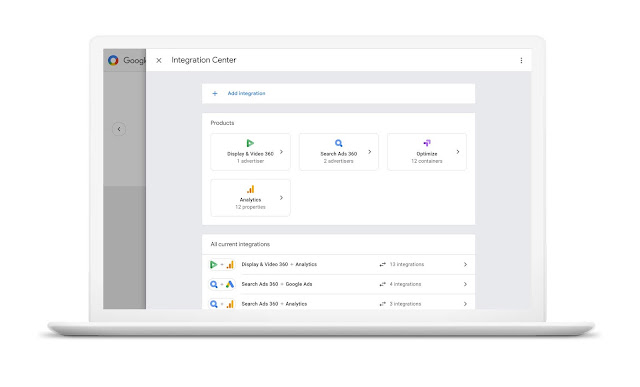With the Big Game around the corner, brands will soon be debuting their highly anticipated 2018 TV spots. In recent years, we’ve seen marketers adopt a number of strategies across TV and digital to drive brand awareness around the event, from uploading their videos early to YouTube to promoting mobile apps and social hashtags in their commercials during the game.
Today, we’re introducing two new features in DoubleClick Bid Manager that help marketers effectively coordinate their TV and digital campaigns and ensure their message lands during big cultural and real-world moments.
Sports fans are engaging across screens
Cross-screen brand strategies are critical to success, because today’s sports fans are engaging with content across devices more than ever. In a recent study, Ipsos found that 80% of sports viewers say they use a computer or smartphone while watching live sports on TV, to do things like searching for player stats and live scores, messaging other fans, and watching related videos.
1
To reach a broad, engaged audience of sports fans, marketers need to complement their live TV commercials with coordinated messages across digital devices.
Reach audiences around real-world events
Real-time triggers is a new, easy-to-use workflow now available as a beta
* in DoubleClick Bid Manager. It allows advertisers to activate display and video campaigns in real-time, based on pre-defined “triggers” or moments that correspond with an event on live TV or in the real world.
Brands define the triggers they care about in Bid Manager and then specify which ad creative they want to go live immediately following that event. For example, during a live televised event, an advertiser might trigger digital video ads to serve right after their commercial airs on TV. These ads could promote a lower-funnel action like an app download or a store visit, or they could promote the new spot that just aired and drive people to watch it again on YouTube. In this way, the brand can extend the reach and impact of their TV campaign by bringing their message to sports fans who may be engaging on second-screen devices.
The real-time triggers workflow makes event-based campaigns scalable and easy to build: set campaigns up ahead of time by selecting the trigger type, defining the moments you care about, and specifying the ads you’d like to serve following that trigger. Bid Manager will then serve your ads automatically when your defined moment occurs.
Key to this new capability is that it’s nearly instantaneous from the time the moment occurs to the time your campaign goes live -- we’ve gotten our serving speed down to just a few seconds so you can provide true real-time coordination between live events and digital campaigns.
In addition to live TV data, we’ve integrated weather data so that advertisers can serve ads based on real-time weather parameters (e.g. when it starts to rain, serve ads for umbrellas). We’ll also be launching sports triggers so that advertisers can serve ads based on real-time occurrences in sporting events (e.g. when a player scores in the game, immediately serve congratulatory ads across devices). This will be particularly useful for all the exciting sports events happening this year.
Measure traditional TV campaigns alongside your digital reporting
Real-time coordination of TV and digital campaigns is important for reaching audiences across screens. But it’s also important for buyers to be able to measure their TV campaigns alongside their digital ones.
Access to TV metrics can help digital buyers better understand how TV dollars are working to reach their audiences. They can then use these insights to better plan and coordinate their digital campaign budgets and tactics.
We’re giving digital buyers access to linear TV campaign data directly in Bid Manager, through a new reporting dashboard called TV Ad Explorer (available in beta*). This launch builds on our
efforts to make linear TV buying and impact-based measurement available in Bid Manager.
With TV Ad Explorer, you can immediately begin to explore the metrics from your recent TV campaigns, whether you bought the media through Bid Manager or not. Google collects minute-by-minute ad airings data from standard broadcast sources and partners in a privacy-safe way. This data enables advertisers to see airings data as soon as a day after airing, as well as measure the reach of their TV ads by daypart, demographics, genres, networks and shows.
TV Ad Explorer can help answer questions such as “Did my TV campaign deliver against the intended target?” and “On which shows or content did my TV campaign index heavily?” Brands can use the answers to these questions to inform their digital campaign tactics. Brands can also look at their TV campaign performance around big events from previous years and use those insights to inform creative and media decisions around the same events in the future.

In addition to standard TV metrics, digital metrics such as
Brand Interest (the change in volume of searches for a brand after an ad airs) will be incorporated into TV Ad Explorer to provide additional information for buyers to measure the impact of their TV ads.
In the future, we plan to enable media planning across TV and digital, so advertisers can leverage insights from their TV campaigns to optimize their digital media plans. For example, advertisers will be able to use TV Ad Explorer to project if and how digital media placements can provide incremental reach or more cost-efficient reach to augment TV.
The way people watch video content has changed. As an advertiser, it's not enough to worry about just one screen anymore. To really break through and ensure your message sticks, you need to connect with people across all the content and screens they are choosing. Today’s launches advance our efforts to help advertisers bridge the gap between TV and digital.
1Google/Ipsos Connect, Sports Viewing Survey, US, December 2017 (n of 1,520 adults aged 18 to 54 who identify themselves as sports fans. Average across 10 sports.)
*The availability of TV Ad Explorer and Real-time triggers varies across regions depending on the type of data and inventory you’re using. Please talk to your DoubleClick Sales rep to understand what is available for your region and campaign type.
Posted by Jean-Claude HomawooProduct Manager, DoubleClick




















